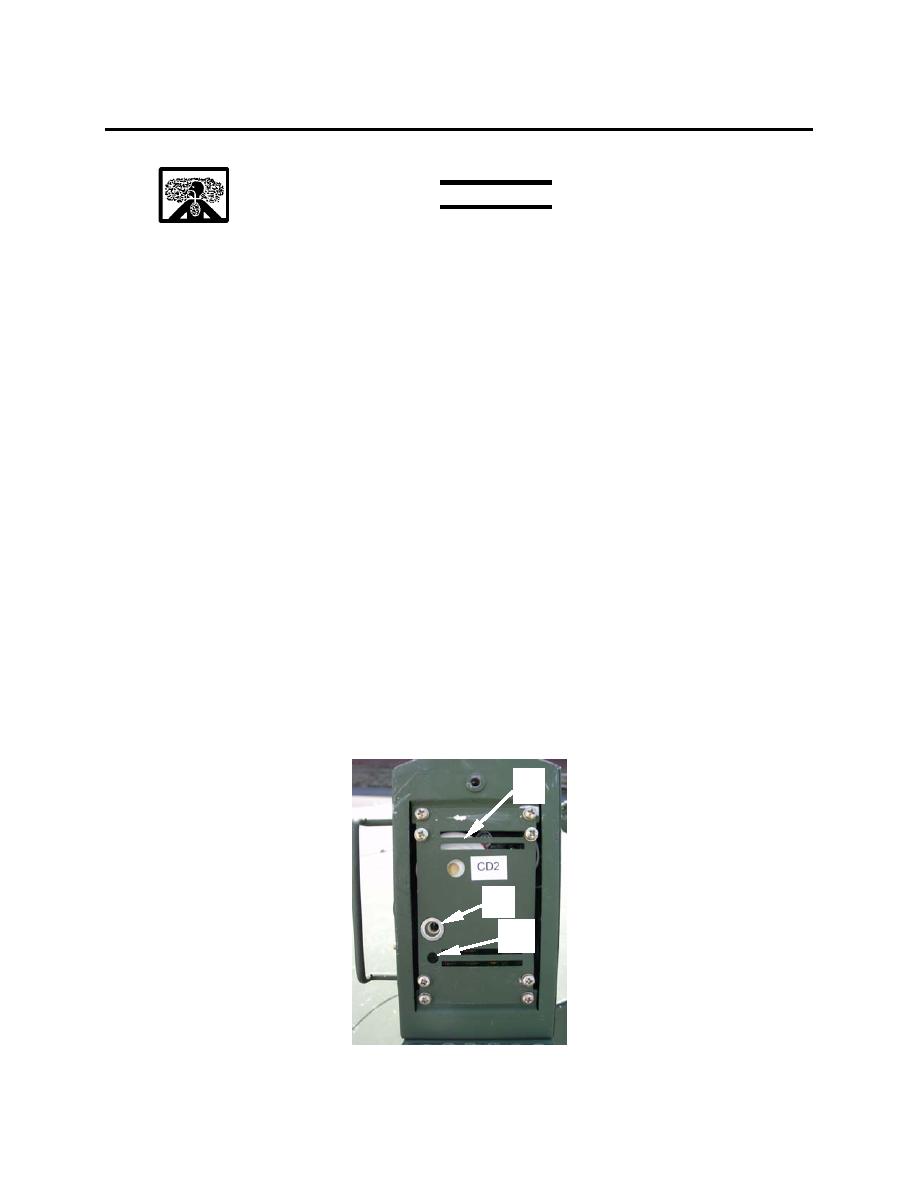
TM 9-4520-272-14&P
0005 00
Operating the Carbon Monoxide Detector
WARNING
Actuation of the carbon monoxide detector indicates the presence of CO
which can be FATAL. Operate LCFH in a well ventilated area, away
from any openings. Failure to do so can result in serious injury or death.
If alarm sounds:
1. Immediately move to a location which has fresh air, outdoors or by an open door/window.
DO A HEAD COUNT TO CHECK THAT ALL PERSONS ARE ACCOUNTED FOR. DO NOT REENTER
PREMISES UNTIL THE MEDICAL PERSONNEL HAVE ARRIVED, THE PREMISES HAS BEEN AIRED
OUT, AND THE ALARM REMAINS IN ITS NORMAL CONDITION.
2. Call for medical support personnel.
3. Press the reset button (1). After following steps 1 and 2, if your alarm reactivates within a 24-hour
period, repeat steps 1 and 2 and contact unit maintenance to examine and/or replace the detector.
When the power switch on the operator control box is turned on, the status light (2) on the front of the
carbon monoxide detector (3) will alternately switch between RED and GREEN, as the unit performs a
two and a half minute warm-up and self-test procedure.
The audible tones on the detector will cycle twice, emitting two sets of four tones. At the end of this 2-1/2
minute cycle, the status light (2) will turn GREEN to indicate normal operation and good, safe air. The
alarm relay is energized during the 2-1/2 minute warmup cycle.
The CO detector continuously monitors the air in the shelter. If the detector measures levels of CO
greater than the danger level, the RED light will turn on, the Alarm Relay will switch to actuate the alarm
circuits in the operator control box, the buzzer will sound, and the heater will shut down. The detector is
programmed to alarm if the danger level of carbon monoxide is exceeded, which are time and
concentration related. The alarm points are 70 ppm of carbon monoxide after 60 to 240 minutes, 150 ppm
of CO after 10 to 50 minutes, and 400 ppm of CO after 4 to 15 minutes, per UL Standard 2034.
3
1
2
0005 00-18

